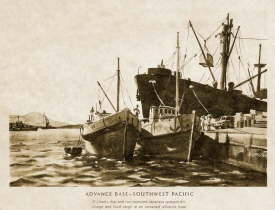In 1712, Thomas Newcomen erected a steam engine of his own design near Dudley, in the West Midlands of England, thereby kicking off the age of steam. (Yes, this would have made a better post last year, to mark a round 300-year anniversary, but better late than never..)
We were told in the 5th grade that the steam engine had been invented by James Watt after noticing the way that the steam pressure in a teapot could cause the lid to lift a little. A nice story, but (a) James Watt did not invent the steam engine, and (b) early steam engines did not work the way that the teapot story would suggest.
In ancient Greece there were some experiments with the use of steam power to create mechanical motion; thereafter nothing significant happened in this field until the late 1600s, when Thomas Savery invented a device for raising water by steam: it was intended to address the growing problem of removing water from mines. Savery’s invention was conceptually elegant, with no moving parts other than the valves: unfortunately, it could not handle a water lift of more than about 30 feet, which was far insufficient for the very deep mines which were then becoming increasingly common.
Newcomen’s engine filled a cylinder with low-pressure steam, which was then abruptly cooled by the injection of a water jet. This created a partial vacuum, which pulled the piston down with great force–these were called “atmospheric” engines, because the direct motive force came from air pressure, with the role of the steam being simply to create the vacuum when condensed. After the piston reached the bottom of the cylinder, it would be pulled upwards by a counterweight, and the cycle would repeat. (See animation here.) Conceptually simple, but modern reconstructors have found it quite difficult to get all the details right and build an engine that will actually work.
These engines were extremely inefficient, real coal hogs, requiring about 25 pounds of coal per horsepower per hour. They were employed primarily for water removal at coal mines, where coal was by definition readily available and was relatively cheap. But as the cotton milling industry grew, and good water-power sites to power the machinery became increasingly scarce, Newcomen engines were also employed for that service. For example, in 1783 a cotton mill–complete with a 30-foot waterwheel–was constructed at Shudhill, near Manchester..which seemed odd given that there was no large stream or river there to drive it. The mill entrepreneurs built two storage ponds at different levels, with the waterwheel in between them, and installed a Newcomen engine to recycle the water continuously. The engine was very large–with a cylinder 64 inches in diameter and a stroke of more than 7 feet–and consumed five tons of coal per day.
Despite their tremendous coal consumption and their high first cost, a considerable number of these engines were installed, enough that someone in 1789 referred to the Newcomen and Savery engines in the Manchester area as common old smoaking engines. The alternative to the Newcomen engine described above would have been the use of actual horses–probably at least 100 of them, if my guesstimate of 40 horsepower for this engine is correct. These early engines resembled the mainframe computers of the early 1950s, in that they were bulky, expensive, resource-intensive, and limited in their fields of practical applicability…but, within those fields, absolutely invaluable.

